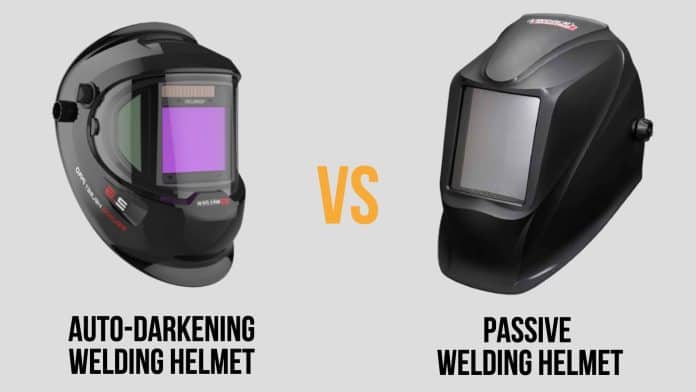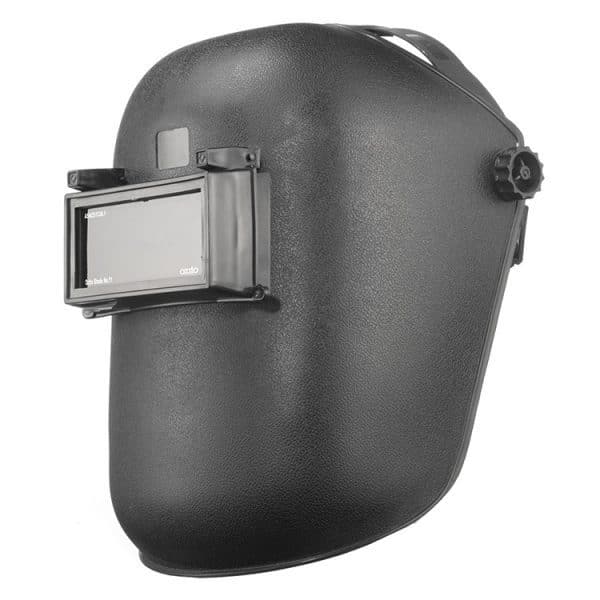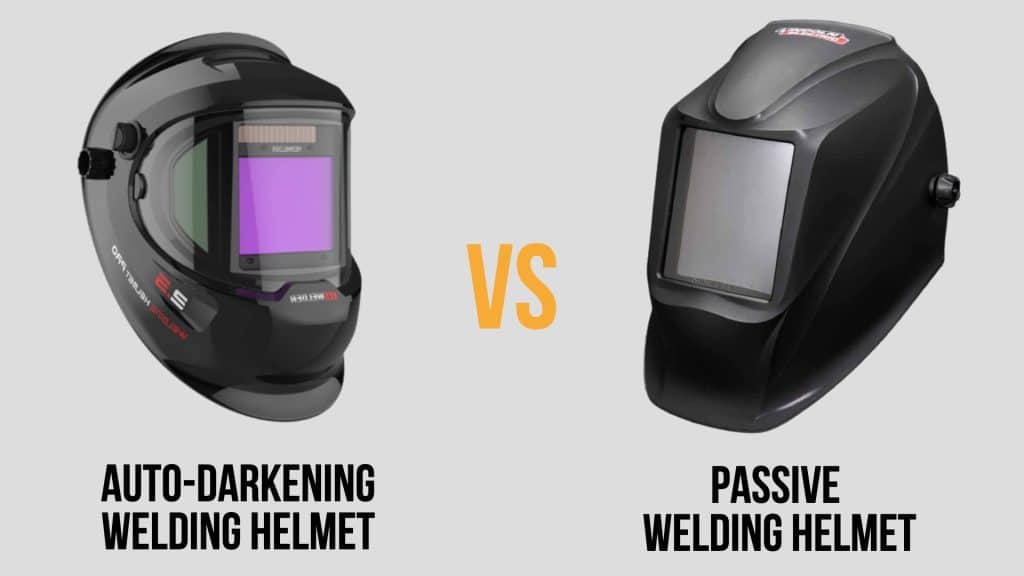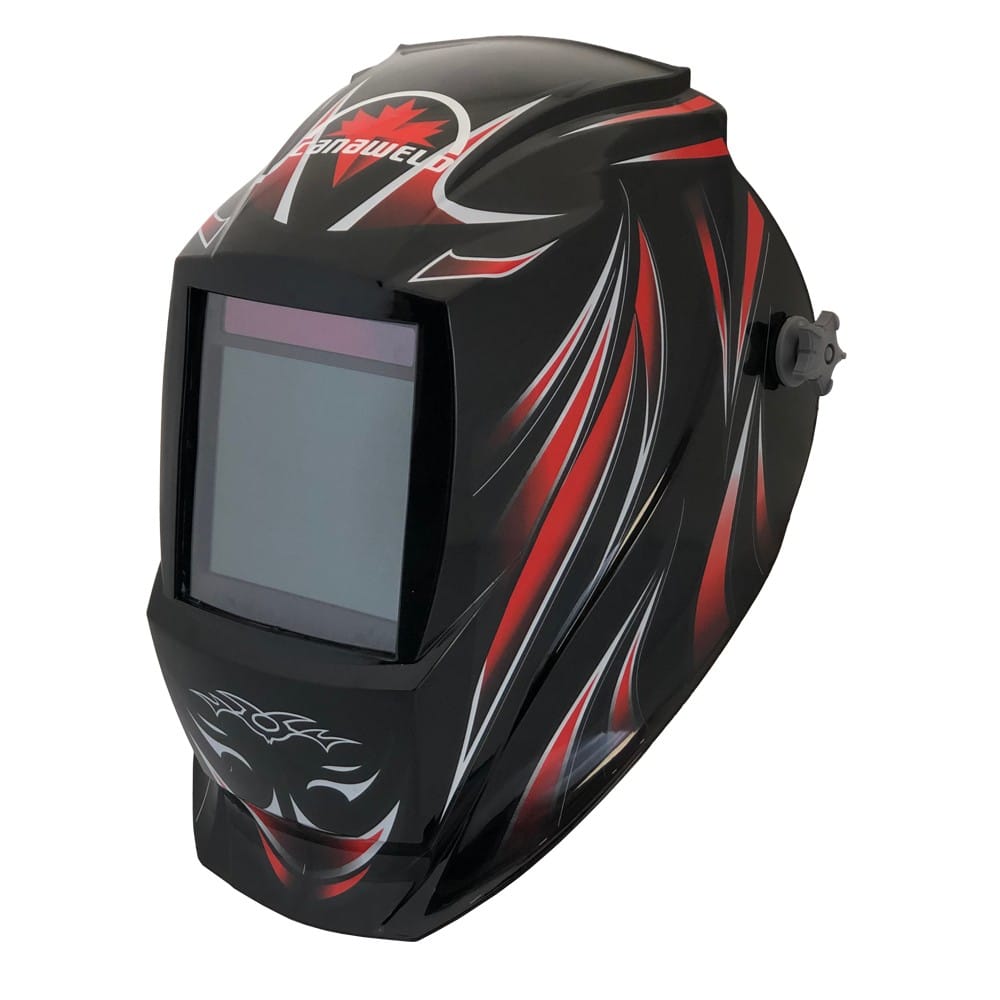When it comes to welding, safety should always be a top priority. That’s where a welding helmet steps in to save the day! But have you ever wondered what the purpose of a welding helmet actually is? Well, look no further, because we’re here to shed light on this essential piece of protective gear. With its innovative design and advanced features, a welding helmet serves to shield the welder’s face and eyes from the extreme heat, intense light, and harmful sparks that accompany the welding process. Whether you’re a professional welder or a DIY enthusiast, a welding helmet is a must-have to ensure your safety and unleash your welding skills with confidence!
Review contents
Protection from Arc Rays
Shielding the eyes
One of the main purposes of a welding helmet is to protect our eyes from the harmful effects of arc rays. Arc rays are produced during welding and can emit intense light, including ultraviolet (UV) and infrared (IR) radiation. These rays can cause significant damage to the eyes, including burns to the cornea and retina, and can even lead to long-term vision problems or blindness.
A welding helmet is designed to shield our eyes from these arc rays. The helmet is equipped with a darkened lens, typically made of tinted glass or a specialized filter, that effectively filters out the harmful UV and IR radiation while still allowing us to see the welding area. This ensures that our eyes are protected from the intense light produced during welding, preventing any potential eye damage.
Preventing burns on the face
In addition to protecting our eyes, a welding helmet also plays a crucial role in preventing burns on the face. Welding processes generate intense heat, sparks, and molten metal, which can easily cause burns or injuries to exposed skin. Without proper protection, our face and neck are particularly vulnerable to these hazards.
A welding helmet covers not only our eyes but also our entire face, providing a protective barrier against burns. The helmet is designed to fit securely around the head, with a durable shell that shields our face from the heat, sparks, and debris that are common in welding operations. This helps to prevent burns and other injuries, ensuring our safety while we work.
Avoiding skin damage
Another benefit of wearing a welding helmet is that it helps to avoid skin damage. Exposure to arc rays and the intense heat created during welding can cause severe burns or damage to the skin. Prolonged exposure to these hazards can lead to painful skin conditions, such as erythema, which is characterized by redness, inflammation, and blistering.
By providing a full-face coverage, a welding helmet acts as a barrier, minimizing the risk of skin damage. It blocks the harmful UV and IR radiation from reaching our skin and keeps us protected from the high temperatures associated with welding processes. This ensures that our skin remains safe and prevents the development of any skin-related complications.
Reducing the risk of eye injury
One of the most significant risks in welding operations is eye injuries. Without adequate protection, our eyes are susceptible to various hazards, including flying debris, sparks, molten metal, and intense light. These hazards can cause serious damage to the eyes, ranging from minor irritations to permanent vision loss.
A welding helmet is specifically designed to reduce the risk of eye injuries. The darkened lens in the helmet not only shields our eyes from the harmful arc rays but also acts as a barrier against flying debris and sparks. It prevents these particles from entering our eyes, ensuring that they remain safe and protected throughout the welding process. By reducing the risk of eye injuries, a welding helmet is an essential piece of personal protective equipment (PPE) for anyone involved in welding operations.
Safety Measures
Ensuring work safety
Apart from providing protection against specific welding hazards, a welding helmet also helps to ensure overall work safety. Welding is a high-risk occupation, and workers are exposed to numerous potential dangers, including electric shock, falls, burns, and respiratory hazards. A welding helmet, along with other appropriate safety measures, plays a critical role in minimizing these risks and creating a safe work environment.
By wearing a welding helmet, we are not only protecting our eyes and face but also sending a clear message about the importance of safety in the workplace. It sets a positive example for other workers and promotes a safety-conscious culture. It also demonstrates our commitment to following safety guidelines and regulations, which are essential for preventing accidents and injuries in welding operations.
Preventing long-term health issues
In addition to immediate safety concerns, a welding helmet is also crucial for preventing long-term health issues associated with welding. Welding processes produce fumes, gases, and particulate matter that can be harmful if inhaled. Prolonged exposure to these substances can lead to respiratory problems, such as asthma, bronchitis, and even lung cancer.
By incorporating a respiratory protection component, such as a respirator or a powered air-purifying respirator (PAPR), into the welding helmet design, we can ensure that we are not inhaling the harmful fumes and gases while working. This helps to minimize the risk of respiratory diseases and ensures that our lungs remain protected throughout our welding career.
Reducing the risk of blindness
While protecting our eyes from arc rays is crucial, it is also essential to recognize the potential for long-term vision problems or even blindness in welding operations. Welders are at risk of developing conditions such as cataracts, macular degeneration, and welder’s flash, which is a painful inflammation of the cornea caused by prolonged exposure to intense light.
By wearing a welding helmet with a darkened lens, we significantly reduce the risk of developing such vision-related issues. The lens blocks the harmful UV and IR radiation, minimizing the strain on our eyes and reducing the chances of long-term eye damage. By prioritizing eye protection, we can safeguard our vision and maintain healthy eyesight throughout our welding career.
Mitigating ultraviolet (UV) radiation exposure
Another important safety measure offered by a welding helmet is the mitigation of ultraviolet (UV) radiation exposure. UV radiation is a known carcinogen and can cause skin cancer, premature aging, and other skin-related conditions. In welding, the intense UV radiation produced can be especially harmful, as it can penetrate the skin and cause immediate and long-lasting damage.
A welding helmet provides a significant level of UV radiation protection by shielding our face and neck from direct exposure to the intense light. The darkened lens helps to filter out the harmful UV radiation, preventing it from reaching our skin. This reduces the risk of UV-related skin damage and greatly contributes to our overall health and well-being.
This image is property of ozito.com.au.
Arc Flash Protection
Shielding from intense light
When it comes to arc flash protection, a welding helmet plays a vital role in shielding us from intense light. Arc flashes are sudden releases of electrical energy that can generate extremely bright light, often comparable to looking directly at the sun. This intense light can cause temporary or permanent vision impairment and can even lead to blindness.
By wearing a welding helmet with a tinted or auto-darkening lens, we effectively shield our eyes from the intense light produced by arc flashes. The lens darkens automatically in response to the arc flash, minimizing the amount of light that reaches our eyes and preventing any potential eye damage. This ensures that we can safely observe and work around arc flashes without compromising our vision.
Preventing retinal burns
Arc flashes not only produce intense light but also release a significant amount of heat energy. This heat energy can lead to retinal burns, which are burns on the retina, the light-sensitive tissue at the back of the eye. Retinal burns can cause severe vision impairment and are considered a serious eye injury.
By wearing a welding helmet, we provide an additional layer of protection against retinal burns. The darkened lens in the helmet not only blocks the intense light produced by arc flashes but also acts as a barrier against the heat energy. It helps to dissipate the heat and prevents it from reaching our eyes, minimizing the risk of retinal burns and ensuring the safety of our vision.
Minimizing the risk of flash blindness
Flash blindness is another significant concern when it comes to arc flash protection. Flash blindness occurs when our eyes are exposed to a sudden burst of bright light, causing a temporary loss of vision. In welding operations, arc flashes can create such bursts of light, which can be extremely disorienting and can impair our ability to see clearly.
Wearing a welding helmet helps to minimize the risk of flash blindness. The darkened lens in the helmet quickly adapts to the intense light of an arc flash and reduces its brightness, preventing our eyes from being overwhelmed by the sudden burst of light. This allows us to maintain our vision and continue working safely and effectively, even in the presence of arc flashes.
Eye Protection
Protecting against sparks and particles
Eye protection is a crucial aspect of welding safety, as welders are constantly exposed to hazards such as sparks, flying debris, and particles. Without proper eye protection, these hazards can cause severe eye injuries, ranging from minor irritations to more significant damage that may require medical attention.
A welding helmet is designed to provide effective protection against sparks and particles. The helmet’s shell, in combination with the darkened lens, acts as a barrier, preventing these hazards from entering our eyes. It shields our eyes from flying debris and sparks, ensuring that they remain safe throughout the welding process. By wearing a welding helmet, we greatly reduce the risk of eye injuries and maintain optimal eye health.
Avoiding corneal burns
Corneal burns, which are burns on the clear, outermost layer of the eye, are a significant concern in welding operations. The intense light and heat generated during welding can easily cause corneal burns if our eyes are not adequately protected. Corneal burns can be extremely painful and can result in reduced vision or even permanent damage to the eye.
A welding helmet offers effective protection against corneal burns. The darkened lens in the helmet acts as a barrier, blocking the intense light and heat from reaching our eyes. This helps to prevent corneal burns and ensures the safety of our vision. By wearing a welding helmet, we can confidently work without the constant fear of eye injuries or corneal burns.
Minimizing the risk of foreign object damage
Foreign objects, such as small metal fragments or debris, pose a significant threat to our eyes during welding operations. These objects can easily enter our eyes and cause injuries that can range from minor scratches to more severe damage. Without proper eye protection, the risk of foreign object damage increases significantly.
A welding helmet effectively minimizes the risk of foreign object damage. The helmet’s sturdy shell, in combination with the darkened lens, serves as a protective barrier, preventing foreign objects from entering our eyes. It shields our eyes from flying debris, sparks, and other particles, ensuring that they remain safe and free from any potential damage. By wearing a welding helmet, we greatly reduce the risk of foreign object-related eye injuries and maintain optimal eye comfort and functionality.
This image is property of waterwelders.com.
Respiratory Safety
Avoiding inhalation of fumes and gases
Respiratory safety is a critical aspect of welding operations. Welding processes produce fumes and gases, such as nitrogen dioxide, carbon monoxide, and ozone, which can be hazardous if inhaled. Prolonged exposure to these fumes and gases can lead to respiratory irritation, lung diseases, or even more severe health conditions.
To ensure respiratory safety, it is essential to wear a welding helmet that incorporates a respiratory protection component. This can be in the form of a built-in respirator or by wearing a separate respirator in conjunction with the helmet. The respirator filters out the harmful fumes and gases, preventing their inhalation and minimizing the risk of respiratory-related health issues. By prioritizing respiratory safety, we can protect our lungs and maintain optimal respiratory health throughout our welding career.
Preventing respiratory irritation
In addition to protecting against the inhalation of harmful fumes and gases, a welding helmet with respiratory protection also helps prevent respiratory irritation. Welding fumes and gases can irritate our airways, causing symptoms such as coughing, wheezing, and shortness of breath. Prolonged exposure to these irritants can lead to chronic respiratory conditions or exacerbate existing respiratory problems.
By wearing a welding helmet with a well-fitting respirator, we create a sealed environment that prevents the entry of fumes and gases into our airways. The respirator effectively filters out these irritants, reducing the risk of respiratory irritation and promoting comfortable and healthy breathing. By prioritizing respiratory safety, we can minimize the risk of respiratory irritation and ensure overall respiratory well-being.
Minimizing the risk of lung diseases
Perhaps one of the greatest long-term health concerns in welding operations is the risk of developing lung diseases. Welding fumes contain harmful substances, such as metals, metal oxides, and various gases, that can accumulate in the lungs and lead to respiratory conditions such as chronic bronchitis, asthma, or even lung cancer.
By wearing a welding helmet with effective respiratory protection, we significantly reduce the risk of inhaling these harmful substances. The respirator in the helmet filters out the hazardous fumes and gases, preventing them from entering our lungs. This helps to minimize the risk of developing lung diseases and ensures the long-term health and well-being of our respiratory system.
Protection from Heat and Flames
Preventing burns on the scalp
In addition to protecting our face and eyes, a welding helmet also helps prevent burns on the scalp. Welding processes generate intense heat, and without proper protection, the scalp is vulnerable to burns or injuries from sparks, molten metal, or accidental contact with hot surfaces or objects.
A welding helmet covers not only our face but also our entire head, including the scalp. The helmet’s shell acts as a protective barrier, shielding our scalp from heat, sparks, and other hazards prevalent in welding operations. This significantly reduces the risk of burns and ensures the safety and well-being of our scalp while we work.
Shielding the face from heat
Another essential aspect of protection from heat and flames is shielding the face. Welding processes generate high temperatures, and exposure to these temperatures can cause burns or injuries to the face. Without proper protection, the face is particularly susceptible to burns from sparks, molten metal, or radiant heat.
A welding helmet provides a comprehensive solution for shielding the face from heat. The helmet’s durable shell acts as a heat-resistant barrier, protecting our face from direct exposure to high temperatures. This helps to prevent burns and ensures that our face remains safe throughout the welding process. By wearing a welding helmet, we can confidently work without worrying about potential heat-related injuries to our face.
Avoiding hair and skin ignition
Apart from preventing burns, a welding helmet also helps to avoid the ignition of hair and skin. Welding processes involve sparks and molten metal that can easily come into contact with exposed hair or skin, causing them to ignite. This can lead to severe burns, injuries, or even fires.
By fully covering our head and face, a welding helmet acts as a barrier, preventing sparks and molten metal from reaching our hair and skin. The helmet’s design ensures that our hair and skin remain safely protected, greatly reducing the risk of ignition. By wearing a welding helmet, we eliminate the risk of hair and skin-related injuries or accidents, ensuring our safety and well-being.
This image is property of d3dbtvmfwwhlf2.cloudfront.net.
Comfort and Visibility
Clarity of vision during welding
In addition to providing necessary protection, a welding helmet also ensures clarity of vision during welding operations. Clear and unobstructed vision is essential for producing high-quality welds and ensuring precision in our work. It allows us to see the welding area accurately and perform the necessary adjustments or modifications with ease.
A welding helmet, particularly one equipped with an auto-darkening lens, offers optimal clarity of vision. The lens automatically adjusts its darkness level to the intensity of the arc, ensuring proper visibility in different lighting conditions. This enables us to have a clear view of the welding area and our workpiece, allowing us to weld accurately and achieve the desired results.
Reducing eye strain and fatigue
Working for extended periods without proper eye protection can lead to eye strain and fatigue. The intense light produced during welding can strain the eyes, causing discomfort, headaches, or difficulty focusing. Eye strain can significantly impact our productivity and quality of work.
A welding helmet with an appropriate lens, such as an auto-darkening lens, helps to reduce eye strain and fatigue. The lens filters out the intense light, making it more comfortable for our eyes to work in welding conditions. This allows us to work for longer periods without experiencing eye strain, ensuring our comfort and minimizing the risk of vision-related issues.
Providing a comfortable fit
Welding often involves prolonged periods of work, which can be physically demanding. A poorly fitting or uncomfortable welding helmet can exacerbate fatigue, discomfort, and reduce overall productivity. Therefore, it is crucial to ensure that the welding helmet provides a comfortable fit.
Many welding helmets are designed with adjustable headgear or suspension systems, allowing us to customize the fit according to our preferences. These features help to distribute the weight of the helmet evenly, reducing strain on the neck and head. By wearing a well-fitting welding helmet, we can work comfortably for extended periods, enhancing our productivity and overall job satisfaction.
Minimizing neck and head fatigue
Neck and head fatigue can be common among welders, especially when working for extended periods or in demanding positions. The weight and design of a welding helmet can significantly contribute to neck and head fatigue if not appropriately addressed.
To minimize neck and head fatigue, many welding helmets are designed to be lightweight and ergonomic. The helmet’s shell is made from lightweight materials, reducing the strain on the neck and head. Additionally, adjustable headgear or suspension systems allow us to find the optimal balance between comfort and stability. By wearing a welding helmet that minimizes neck and head fatigue, we can work more efficiently and reduce the risk of musculoskeletal injuries.
Protection for the Head
Shielding the head from falling objects
Falling objects present a significant hazard in various welding environments, such as construction sites or industrial settings. These objects, ranging from tools to metal debris, can cause severe head injuries if they come into contact with our heads. Especially when working at heights or in busy areas, it is crucial to protect our heads from such potential accidents.
A welding helmet, with its sturdy construction and full-head coverage, effectively shields our heads from falling objects. The helmet’s shell provides a durable layer of protection, helping to prevent any potential head injuries. By wearing a welding helmet, we greatly reduce the risk of head-related accidents and maintain the safety of our heads while working in high-risk environments.
Avoiding head injuries
Apart from falling objects, welding processes can present other hazards that can lead to head injuries. Accidental contact with hot metals or surfaces, slips or falls, or even collisions with moving machinery are some potential risks in welding operations. Head injuries can range from minor cuts or bruises to more severe trauma, such as concussions or skull fractures.
A welding helmet serves as essential head protection, minimizing the risk of head injuries. With its sturdy construction and secure fit, the helmet acts as a protective barrier, reducing the impact of accidents or collisions on the head. It absorbs and disperses the force, decreasing the likelihood of severe head injuries. By wearing a welding helmet, we prioritize our safety and well-being, ensuring that our heads remain protected in any welding scenario.
Minimizing the risk of concussions
Concussions are a serious concern when it comes to head injuries in welding operations. A concussion is a type of brain injury that occurs when the brain is jolted or shaken forcefully, often due to a blow to the head. Concussions can cause a range of symptoms, from temporary confusion and dizziness to long-lasting cognitive impairments.
Wearing a welding helmet significantly reduces the risk of concussions. The helmet’s sturdy construction and cushioning padding act as shock absorbers, mitigating the force of impacts to the head. This helps to minimize the risk and severity of concussions, ensuring the safety of our brain and preserving our cognitive well-being. By wearing a welding helmet, we prioritize our long-term brain health and reduce the chances of experiencing the potentially devastating effects of concussions.
This image is property of www.canaweld.com.
Personal Protective Equipment (PPE)
Meeting safety regulations
Personal protective equipment, including welding helmets, is an essential component of workplace safety regulations and guidelines. Regulatory bodies such as OSHA (Occupational Safety and Health Administration) require employers to provide appropriate PPE to protect workers from potential hazards in the workplace.
By wearing a welding helmet, we fulfill the requirements set forth by safety regulations. It demonstrates our commitment to following safety guidelines and ensures that we are compliant with the necessary workplace safety standards. By using the appropriate PPE, including a welding helmet, we contribute to a safer work environment and promote the overall well-being of ourselves and our colleagues.
Complementing other safety gear
In addition to meeting safety regulations, a welding helmet complements other safety gear and contributes to comprehensive personal protection. Welding operations involve multiple potential hazards, including eye and face injuries, burns, and respiratory hazards. A range of personal protective equipment, including welding gloves, fire-resistant clothing, and safety boots, is necessary to address these hazards effectively.
A welding helmet serves as a crucial element of this comprehensive personal protective equipment (PPE) ensemble. It provides essential protection to the eyes, face, and head, ensuring that these vulnerable areas are shielded from potential hazards. By wearing a welding helmet alongside other necessary safety gear, we create a comprehensive protective barrier, minimizing the risk of injuries or accidents and ensuring our overall well-being.
Ensuring overall worker protection
Ultimately, the purpose of a welding helmet is to ensure the overall protection of workers involved in welding operations. Welding is a high-risk occupation, and the hazards associated with it can have serious consequences on our health and well-being. By wearing a welding helmet, we take the necessary steps to protect ourselves from potential dangers and ensure our safety throughout our welding career.
A welding helmet safeguards our eyes, face, and head from arc rays, sparks, heat, and other hazards prevalent in welding processes. It reduces the risk of eye injuries, burns, concussions, and other potential injuries. By prioritizing personal protection through the use of a welding helmet, we prioritize our safety, health, and overall well-being.































